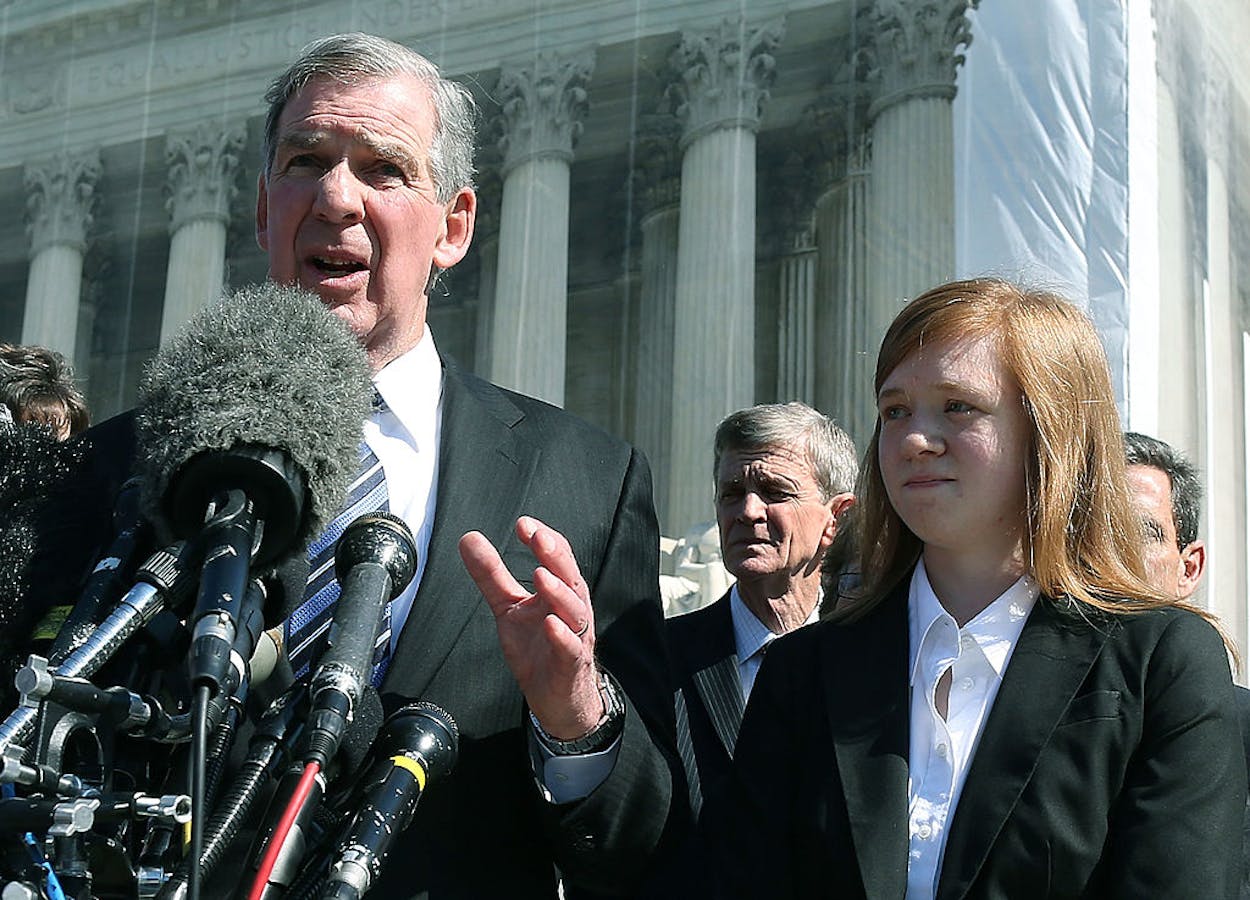A New York Times report earlier this month rekindled the debate over affirmative action. On August 1, Charlie Savage reported that the U.S. Department of Justice’s civil rights division would be investigating universities that may have used affirmative action policies to discriminate against white students. The report was based largely on an internal document shared within the department, which calls for lawyers who are interested in “investigations and possible litigation related to intentional race-based discrimination in college and university admissions.”
The next day, the Department of Justice responded by stating that the internal announcement was seeking lawyers for a single case involving Asian-American students, but it’s not clear whether that’s the case. As Savage reported, there are aspects of the document that suggest the investigation could be more widespread:
Several current and former Civil Rights Division employees greeted the department’s statement on Wednesday with skepticism. The personnel announcement said it was seeking multiple lawyers to work on “investigations,” plural. It also indicated that the project will be run the division’s front office, where Trump administration political appointees work, rather than by the division’s Educational Opportunities Section, where career civil-service lawyers normally handle university-related complaints.
The department’s investigation may have to do with a lawsuit brought against Harvard University by Students for Fair Admissions on behalf of Asian-American students. The suit alleges that Harvard engages in “intentional discrimination on the basis of race and ethnicity” and “uses ‘holistic’ admissions to disguise the fact that it holds Asian-Americans to a far higher standard than other students and essentially forces them to compete against each other for admission.”
Harvard has been involved in this lawsuit since 2014, but as the Harvard Crimson explains, the lawsuit was put on hold during the University of Texas at Austin’s own affirmative action battle in the Supreme Court. Harvard even submitted an amicus brief in support of affirmative action during the Fisher v. University of Texas case. After that lawsuit ended in June of last year with a 4-3 decision in favor of UT’s admission process, it cleared the way for the lawsuit against Harvard to continue.
Harvard’s support of UT Austin wasn’t much of surprise, especially since the two universities were sued by essentially the same person. The nonprofit behind the Harvard lawsuit, Students for Fair Admissions, is run by Edward Blum, the former Houstonian who was also behind Abigail Fisher’s lawsuit against UT Austin. Blum’s nonprofit is behind another affirmative action lawsuit against University of North Carolina-Chapel Hill. Blum has made it clear that he won’t stop on his quest to end affirmative action (his other organization, Project on Fair Representation, has even set up websites seeking students with complaints against affirmative action).
Since the New York Times‘ report, there have been other articles exploring how wealth affects the admissions process more than affirmative action. Even in Fisher’s suit against UT Austin, she was unable to support her claims of being racially discriminated against in the admissions process. In fact, in a ProPublica report, Nikole Hannah-Jones notes that though there were students with lower test scores and grades than Fisher admitted into UT, most of them—42 applicants—were white. Only five were black or Latino. The majority of UT Austin’s admissions is made up of students who graduated in the top 7 percent (it was originally the top 10 percent and most recently the top 8 percent) of Texas high schools. The remaining students are admitted using a holistic process, which does include race, but only as “a factor of a factor of a factor,” rather than as an extra point or to fulfill any racial quota. Still, Fisher believed that race should not have been any sort of factor in UT’s admissions process.
What opponents of affirmative action tend to miss is why affirmative action exists in the first place. As Richard Reddick, an associate professor in Educational Administration, explained after the Fisher v. UT Austin decision, affirmative action is in place to account for inequalities in access to resources and education that still exist to this day:
Opponents of affirmative action often argue that metrics, such as test scores and class rank, that appear to be neutral, should be the method by which to admit students.
These arguments fail to consider the real impact that racial and socioeconomic discrimination has on educational opportunity. School resources and teacher quality differ significantly, and intangibles such as leadership opportunities often depend on subjective criteria such as teacher recommendations.
Furthermore, many students from underrepresented communities confront challenges in navigating school systems. We additionally know that standardized testing can show biasin certain populations.
In other words, these “neutral” measures actually reinforce social inequities.
Maybe when we’ve eradicated inequalities that make even education an uneven playing field for students, affirmative action may no longer be necessary. But we aren’t there yet. Hannah-Jones, who’s written extensively about education inequality, recently spoke with Democracy Now about the Department of Justice investigation and the Harvard lawsuit. In explaining why affirmative action exists, she quoted President Lyndon B. Johnson, the Texan who helped create affirmative action. During his commencement address at Howard University in 1965, Johnson said, “You do not take a person who, for years, has been hobbled by chains and liberate him, bring him up to the starting line of a race and then say, ‘you are free to compete with all the others,’ and still justly believe that you have been completely fair. Thus it is not enough just to open the gates of opportunity. All our citizens must have the ability to walk through those gates. This is the next and the more profound stage of the battle for civil rights. We seek not just freedom but opportunity. We seek not just legal equity but human ability, not just equality as a right and a theory but equality as a fact and equality as a result.”








